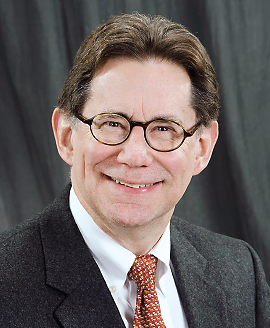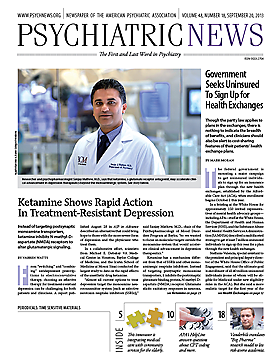Psychiatrist Yeates Conwell, M.D., is a pioneer in what might be called “collaborative care plus.”
A researcher and leader in developing innovative service system models, Conwell is pushing forward the frontiers of the emerging integrated care movement. Leaders in that movement sometimes speak about degrees of integration—there is the original consultation-liaison model practiced by many in the hospital setting; there is co-located care where primary and mental health services are offered at the same site; and there is what some consider the most advanced model of “collaborative care”: a psychiatrist works as a consultant to primary care physicians for an entire caseload of patients in a population.
But Conwell, director of the geriatric psychiatry program at the University of Rochester Medical Center (URMC), is extending the model to integrate medical care with human and social services in the community for elders with depression, dementia, and other mental disorders. Central to his unique vision is the insight, supported by years of research and practice, that social and cultural factors affecting the lives of elders in the community, especially social isolation and social connectedness, are critical to health and well-being—and are important variables in health care utilization and costs.
“A lot of my work, both in terms of research and service system development, has been directed specifically to the integration not just of mental health, primary care, and other medical specialties, but also reaching out to incorporate community-based aging services as a geriatric psychiatrist into that mix,” Conwell told Psychiatric News. In December 2011, Conwell was chosen to be one of 73 “innovators” (and the only psychiatrist) in the Innovation Advisors Program (IAP) sponsored by the federal Centers for Medicare and Medicaid Innovation; that program is designed to recognize innovative health system service design.
“So many of our systems function in silos,” he said. “The siloed mental health versus primary care dichotomy is one barrier, but far more ubiquitous is the barrier between health and human services. Population health allows us to [break down that barrier] if we get to a place where we recognize that community contextual factors influence health care use and expenditures tremendously and that there are these experts in the community that manage morbidities in the community very well.”
Biopsychosocial Tradition ‘Inherited’
As vice chair of the Department of Psychiatry at the University of Rochester, Conwell occupies an office where once sat George Engel, M.D., considered by many to be the father of the “biopsychosocial” model of care. So his vision for how to care for elders living in the community is a natural outgrowth of a long tradition at URMC of stretching the traditional biomedical model to incorporate—as Engel said in a seminal 1977 article in Science—“the patient and the social context in which he lives.”
But his work is also informed by a more personal witness to the strengths and resiliencies of older people. “What brought me into geriatric psychiatry, aside from its being a fascinating field that draws on medical training in neurology and psychiatry, were early influences in which I learned firsthand that older people who age successfully are drawing on remarkable reserves of strength and resilience,” Conwell said. “Our older citizens are survivors, and our models of care for them need to draw on their strengths and resiliencies rather than deficits.”
As director of a partnership between URMC and a community services provider network called the Senior Health and Research (SHARE) Alliance, Conwell has sought to develop collaborative systems of care integrating primary care, mental health care, and community senior service agencies in the care of seniors in the community with mental disorders.
Among his projects is a dementia care program that will link memory disorder specialty services (geriatric psychiatry, psychology, neurology, medicine, and nursing) with social work and other community-based care to optimize independent functioning and quality of life for people with dementia and their families, while reducing overall costs.
“What I have tried to do with colleagues is bring representatives of the aging services network into our clinic so they can work collaboratively in the assessment and ongoing care of patients and families struggling with dementia,” he said. “You might have a depressed older person who has some underlying brain disease and may be brittle on that basis, has partial response to the treatment you provide, and then looks a little bit better and goes home. But if they are going home to a place where they are isolated and socially disconnected, don’t have the stimulus they need, can’t afford their medication, have to worry about keeping their heat on—any number of potential social problems—the treatment we have simply isn’t going to work, or as effectively.”
Like many leaders in integrated care, Conwell says the movement to bring together mental health care, medical care, and human and social services in the community is a remarkable opportunity for psychiatrists. He urges psychiatrists to seek out their own community health centers and hospitals for ways they can contribute their special expertise to the care of patients in primary care and those with chronic medical conditions, and he said they will be welcomed by colleagues in general medicine.
“I know it to be true that so many people in the primary practice community are just worn out by their inability to work effectively across these kinds of boundaries that have been artificially imposed by the way our service systems have evolved over time,” he said. “To be able [to work across those boundaries] in some sort of population health service model is more satisfying and more fun—and not just for the psychiatrist, but for the primary care doctors who need and want our help.” ■

